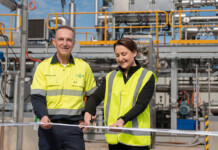The Australian Renewable Energy Agency (ARENA) has opened the second round of its Hydrogen Headstart Program for expressions of interest, with up to $2 billion in funding available to accelerate the development of large-scale renewable hydrogen projects across Australia.
Related article: Woodside inks MoU for liquid hydrogen supply to Japan
This funding round will focus on supporting projects that target high-priority use cases, as well as projects that look at ways to reduce the cost of renewable hydrogen production in the long-term. ARENA welcomes submissions from a range of projects, including those that focus on:
- Innovative plant construction and design to reduce capital costs
- Improving efficiency of electrolysers
- Flexible operations and other methods to reduce the cost of renewable electricity
- Enhancing end-use infrastructure for priority sectors, including hydrogen for green ammonia, iron and steel, alumina, and long-distance heavy transport including aviation and shipping.
ARENA CEO Darren Miller said, “ARENA is aiming to bridge the gap between ambition and reality. We know that renewable hydrogen will play a critical role in decarbonising heavy industry, particularly in sectors where electrification is not feasible or alternatives are limited.
“Getting renewable hydrogen to commercial scale will take time, innovation and ongoing support. By backing industry first-movers, ARENA is providing the certainty to invest, innovate and develop the next wave of projects and learnings.”
Related article: New pilot plant demonstrates hydrogen storage breakthrough
Over the past eight years, ARENA has invested more than $370 million in 65 renewable hydrogen projects, as well as two projects under the first Hydrogen Headstart funding round.
Click here for more information and the Hydrogen Headstart Round 2 program guidelines.







